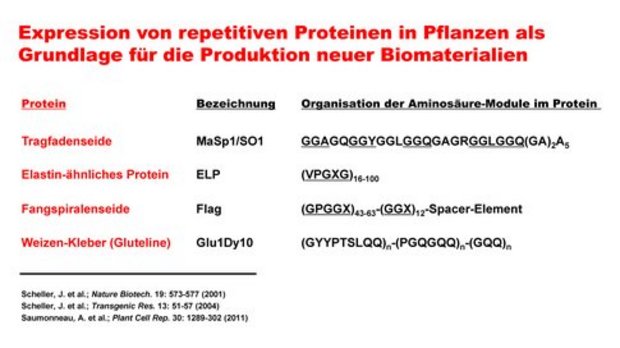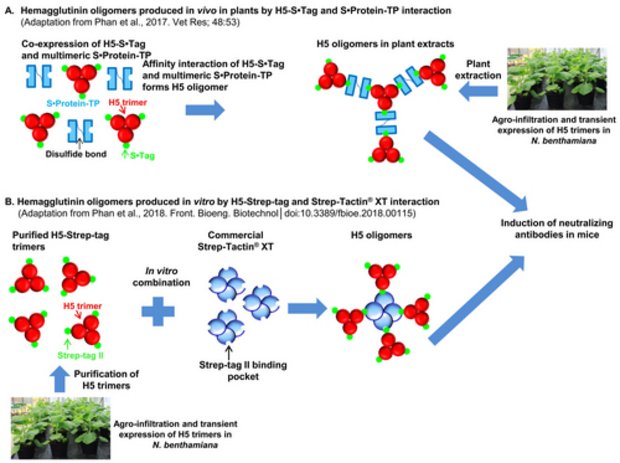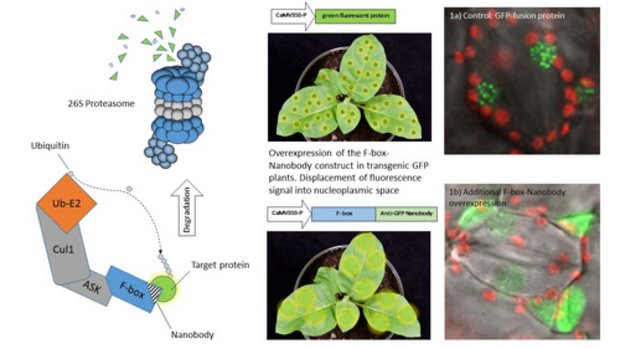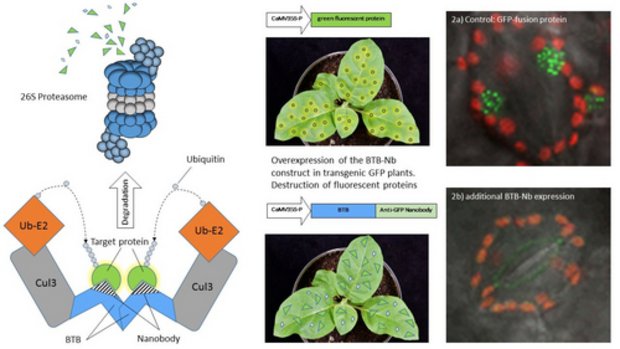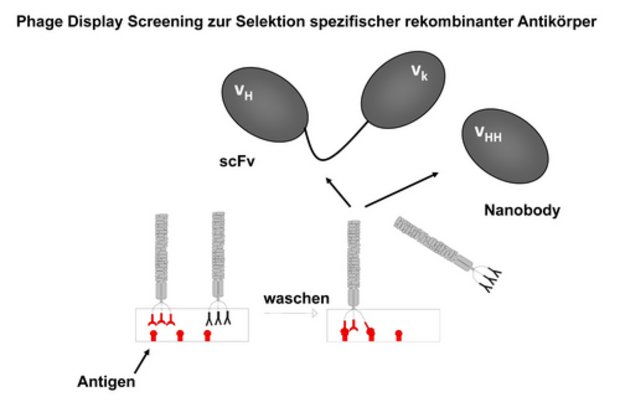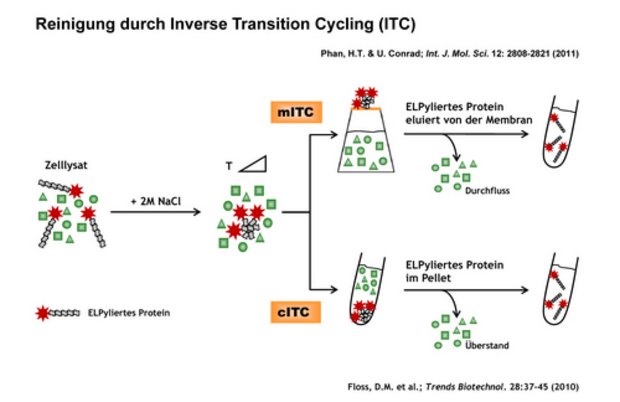Forschungsschwerpunkte
Leitung: Prof. Dr. Udo Conrad
Die Arbeitsgruppe beschäftigt sich mit der Produktion rekombinanter Proteine in transgenen Pflanzen und mit einfachen und innovativen Methoden zur Reinigung dieser Eiweiße. Darüber hinaus beschäftigt sich die Arbeitsgruppe mit dem gezielten Abbau von spezifischen Proteinen in Pflanzen, um deren Funktion zu blockieren.
Ein wichtiger Themenbereich umfasst Arbeiten zum Molecular F(Ph)arming. Ein Schwerpunkt dieser Arbeiten ist die Expression von repetitiven Proteinen in Pflanzen, um auf diese Weise neue Biomaterialien zu erzeugen. Hier stehen Spinnenseidenproteine im Zentrum des Interesses. Während der Evolution haben Spinnen die Produktion und Nutzung sehr verschiedener proteinbasierter Seidenmaterialien perfektioniert. Diese Seidenfasern weisen außerordentliche Eigenschaften auf, die hinsichtlich Festigkeit und Elastizität technische Fasern bei weitem übertreffen. Die Tragfadenseide, von den Spinnen als Haltefaden und als Rahmenfaden ihrer Netze benutzt, weist dabei ganz besondere mechanische Eigenschaften auf: Sie ist fünfmal fester als Stahl und dreimal zäher als Kevlar (p-Aramid), die beste von Menschen hergestellte Kunstfaser. Die Fangfadenseiden, z.B. die flagelliforme Seide, sind weniger fest als die Tragfadenseide, können aber auf das Mehrfache ihrer Länge gedehnt werden, bevor sie reißen. Die Fangfadenseide weist somit eine sehr hohe Elastizität und Dehnbarkeit auf. Sie kann die kinetische Energie der Beute daher sehr gut aufnehmen. Die Arbeiten haben sich deshalb auf die Expression von Hauptbestandteilen der Tragfadenseide, den Proteinen MaSp1 (Scheller et al., 2001) und MaSp2 sowie dem wichtigsten Bestandteil der flagelliformen Seide, dem Protein FLAG, konzentriert. Es wird angenommen, dass die Größe der Tragfadenseidenproteine ein Schlüsselfaktor für die mechanischen Eigenschaften gesponnener Fasern ist, da alle bisher untersuchten Spinnen sehr hochmolekulare Spinnenseidenproteine erzeugen. Aus diesem Grunde steht die Produktion von Spinnenseidenproteinen mit nativer Größe (über 200 kDa) in Pflanzen im Zentrum des Interesses. Als Methode nutzen wir die posttranslationale Verknüpfung in vitro durch Transglutaminase (Weichert et al., 2014) und in vivo durch inteinbasiertes „protein splicing“ (Hauptmann et al., 2013a, Hauptmann et al., 2013b). „Protein splicing“ wurde auch bei der samenspezifischen Akkumulation von stabilen hochmolekularen Spinnenseidenproteinmultimeren benutzt (Weichert et al., 2016). ELPylierte Spinnenseidenderivate erwiesen sich als nicht-cytotoxische und nicht-hämolytische Biopolymere (Hauptmann et al., 2015). Die mechanische Charakterisierung erfolgt durch Kooperationspartner am Fraunhofer IWM Halle (Junghans et al., 2006; Junghans et al., 2008, Weichert et al., 2014, Hauptmann et al., 2013).
